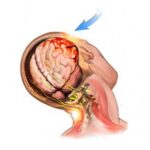Kansas City Interstates have become more dangerous due to the number of drivers who are driving recklessly aggressive. Below are some insights as to what is at work in leading drivers to drive more aggressively followed by two things that might help reverse the trend.
New Universe of Roadway Risk
In the past, it was estimated that about 1-5% of the drivers on the road at any given time were exhibiting some type of aggressive driving behavior. Now, some driving safety experts estimate that 15-20% of the drivers are engaging in dangerous driving habits that open the door for violent crashes that result in more serious injury or death.
If recent trends hold, coupled with traffic safety data, 2024 will rank as the one of the most dangerous years ever on Kansas City roadways. Dangerous, not only in terms of number of traffic fatalities, but also in terms of collisions that cause serious injury.
Causes and Contributing Factors of Reckless Driving
Understanding the causes and contributing factors of aggressive driving is essential in being able to identify solutions. Based on my experience in handling the legal cases related to motor vehicle accidents, here is my list of the most common factors leading to recklessly aggressive driving behaviors.
Pressured Drivers – Busy schedules, deadlines, time constraints, along with other life challenges can create immense pressure on drivers, leading to stress and anxiety. When driving, this pressure can often manifest in aggressive driving behaviors and and taking extraordinary risks at higher speeds.
Increasing Traffic Volumes –the frustration of being slowed of delayed in high traffic congestions can often trigger aggressive driving behaviors like tailgating or making unsafe lane changes as drivers seek to move around slower moving vehicles. More traffic also creates a higher probability of collision.
Drivers in Distress – Anger, frustration, personal issues, drug/alcohol use, or psychological factors make a significant impact in the way we approach driving. Similar to pressure, studies show that mental and emotional distress greatly impacts driving behavior.
Anonymous Drivers – Unlike other social interactions, drivers may often engage in more aggressive driving due to the fact often feel protected by anonymity.
Competitive Drivers – A sense of competitiveness or ego while driving, wanting to asset dominance or control on the road, can often result in drivers exercising unsafe passing maneuvers.
Societal Influence- I think this may be a bigger factor in the rise of reckless driving than we may realize. Where aggressive driving is exhibited by an increasing number of drivers, other drivers are much more inclined to adopt aggressive driving without fully recognizing the deadly consequences of their decision.
Restoring A Better Driving Culture in Missouri
In the past, I have presented 2 ideas which I think would help curb the increase in reckless drivers. First, develop a state-wide driving safety campaign, delivered by popular local sports figures, that not only alerts all drivers to the new universe of risk posed by reckless drivers, but also urges all drivers to drive defensively, protecting themselves against reckless drivers. A secondary objective of such a campaign would be to “villainize” reckless drivers as a public enemy.
Secondly, I feel strongly about the need to implement driver safety education in high school health curriculum (for 9th & 10th grades). I have outlined a curriculum that could be taught in the classroom over 10 weeks.
Make it mandatory to pass a driver’s safety test before issuing a driver’s license.
In middle schools, make driver safety part of the grade school curriculum for pre-teens, educating them on how to be good passengers.






